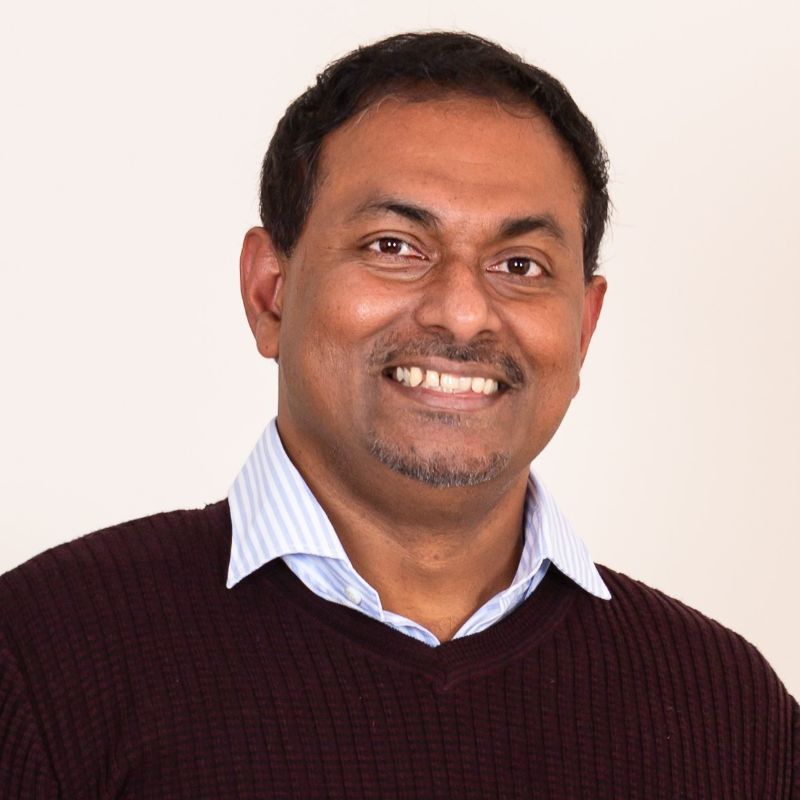Professor Kandeepan Sithamparanathan
Associate Dean, Electronic & Telecommunications Engineering


RMIT Space Industry Hub: Program Lead for Advanced Communications and IoT
Email: kandeepan.sithamparanathan@rmit.edu.au
Phone: +61 39925 2804
Campus: Melbourne City
BH073 - Bachelor of Engineering (Electronic and Computer Systems Engineering) (Honours)
BH094 - Bachelor of Computer Science
BH097 - Bachelor of Engineering Telecommunications (Honours)
BH091 - Bachelor of Engineering (Computer and Network Engineering) (Honours)/Bachelor of Computer Science
BH072 - Bachelor of Engineering (Computer and Network Engineering) (Honours)

RMIT Space Industry Hub: Program Lead for Advanced Communications and IoT
Email: kandeepan.sithamparanathan@rmit.edu.au
Phone: +61 39925 2804
Campus: Melbourne City
BH073 - Bachelor of Engineering (Electronic and Computer Systems Engineering) (Honours)
BH094 - Bachelor of Computer Science
BH097 - Bachelor of Engineering Telecommunications (Honours)
BH091 - Bachelor of Engineering (Computer and Network Engineering) (Honours)/Bachelor of Computer Science
BH072 - Bachelor of Engineering (Computer and Network Engineering) (Honours)
Professor Sithamparanathan is currently the Associate Dean of Electronic and Telecommunications Engineering at the RMIT University. As part of his role, he assists the School of Engineering with strategic directions and development opportunities in the areas of teaching, research, and engagement. He also leads and manages a team of academics and researchers in his Discipline.
Professor Sithamparanathan is an award-winning researcher who is very devout about his research and development activities, he has attained significant recognition in his field of research both nationally and internationally. He is recognised for many of his research works specifically in the areas of cognitive radio communications bringing intelligence to next generation telecommunication systems and in UAV communications. He has published a scholarly book and over 160 scientific papers on top journals and conferences. He supervises many PhD students and constantly takes on vibrant and enthusiastic candidates to train and supervise towards their PhD. Moreover, Professor Sithamparanathan has acquired several millions in research funding grants from various sources further and through such research project he trains and mentors early and mid-career researchers.
He cherishes teaching engineering to the final year undergraduate and postgraduate students in his specialised areas such as wireless and mobile communications, satellite communications and advanced statistical signal processing methods. He consistently receives high teaching ratings from the student surveys because of his commitment and dedication in generating highly skilled next generation engineers in Australia.
Professor Sithamparanathan has an extensive track record of collaborating with many stakeholder in his field such as small to medium sized companies, large companies, government departments, Defence Australia, national and international standardization bodies and regulators, and top universities and research organisations around the world. He uses his extended professional network connect students and providing them with highly valuable opportunities for their career.

Professor Kandeepan collaborated with the following industry partners during their research career:
They have collaborated with the following research organisations during their research career:

Their current research focus is on 5G/6G communications & networks, satellite communications, security & vulnerabilities of next generation communications technologies, and developing machine learning and statistical signal processing techniques.
Communications Engineering, Wireless Communication, Satellite Communication, Wireless Networks, Signal Processing for Communication and Radars, Machine Learning and AI, Internet of Things (IoT), Security in Communication Technologies, Optical Wireless Communication.
Publications
Projects
Awards

Artech House - New York
S. Kandeepan, A Giorgetti (2012)
IEEE WIRELESS COMMUNICATIONS LETTERS, 3 (6), pp.569-572.
A. Al-Hourani, S. Kandeepan, S. Lardner
IEEE Transactions on Wireless Communications, Volume 11, Issue, 5, Pages 1872-1880
S. Kandeepan, S. K Jayaweera, R. Fedrizzi (2012)

Funding - SmartSat CRC $100,000
2021 - 2021
Researchers: Dr P. Conder, Prof S. Kandeepan, Dr A. Hourani, Dr. K Wang, A/Prof W. Rowe
Funding - Defence CRC in Trusted Autonomous Systems $1,000,000
2019 - 2023
Researchers: Prof. S. Kandeepan and Dr Ke Wang
Funding - Orange Labs (France Telecom), Paris $140,000
2014 - 2016
Researchers: Prof. S. Kandeepan

Award date: 2020
Recipients: Kandeepan Sithamparnathan
Award date: 2019
Recipients: Kandeepan Sithamparnathan
Award date: 2010
Recipients: Kandeepan Sithamparnathan

Acknowledgement of Country
RMIT University acknowledges the people of the Woi wurrung and Boon wurrung language groups of the eastern Kulin Nation on whose unceded lands we conduct the business of the University. RMIT University respectfully acknowledges their Ancestors and Elders, past and present. RMIT also acknowledges the Traditional Custodians and their Ancestors of the lands and waters across Australia where we conduct our business - Artwork 'Sentient' by Hollie Johnson, Gunaikurnai and Monero Ngarigo.
Acknowledgement of Country
RMIT University acknowledges the people of the Woi wurrung and Boon wurrung language groups of the eastern Kulin Nation on whose unceded lands we conduct the business of the University. RMIT University respectfully acknowledges their Ancestors and Elders, past and present. RMIT also acknowledges the Traditional Custodians and their Ancestors of the lands and waters across Australia where we conduct our business.